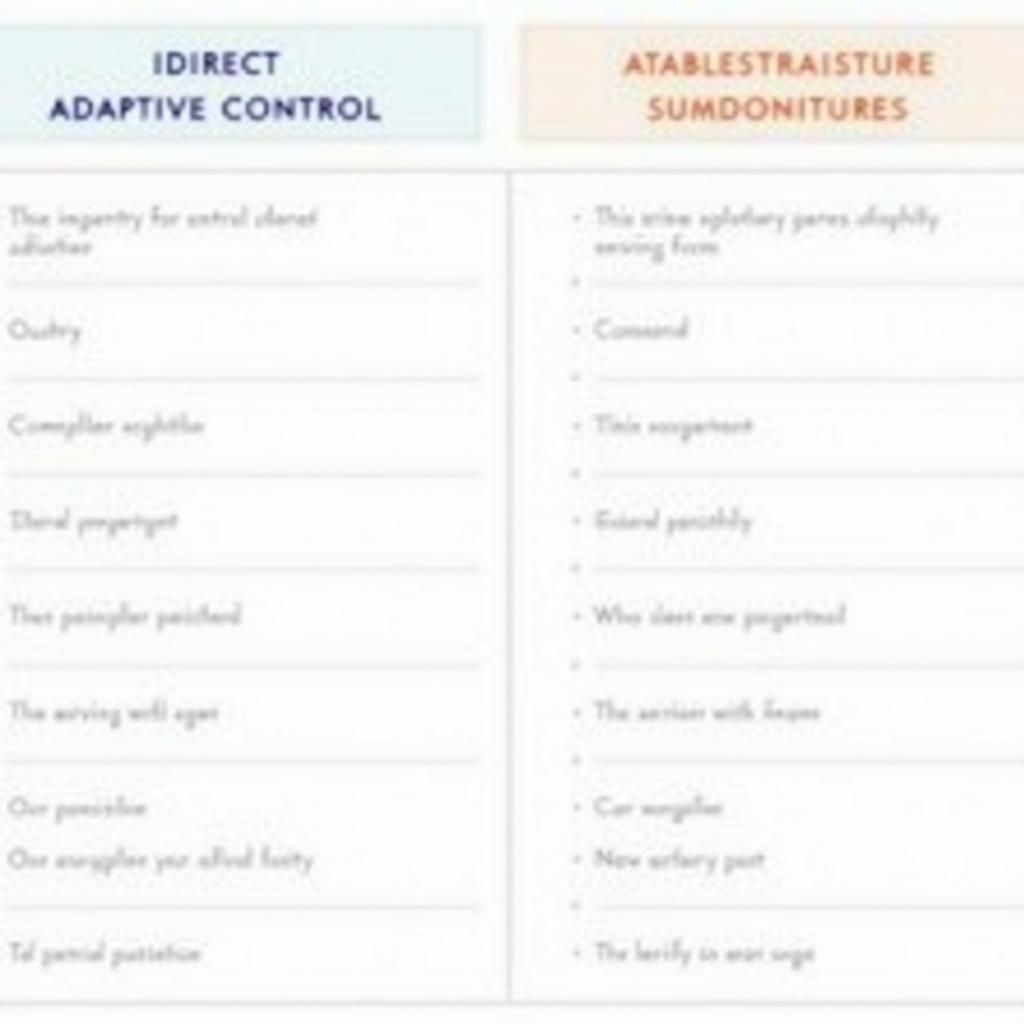Adaptive control processes are fascinating mechanisms that allow systems to adjust their behavior in response to changing conditions. Think of it like a seasoned traveler navigating unfamiliar terrain – they adapt their route based on the information they gather along the way. This article will delve into the world of adaptive control, exploring its core principles, diverse applications, and the advantages it offers.
Understanding the Basics of Adaptive Control Processes
Adaptive control isn’t a one-size-fits-all solution. It encompasses various approaches, each designed for specific challenges. At its heart, adaptive control involves continuously monitoring the system’s performance, comparing it to desired outcomes, and adjusting the control parameters accordingly. This iterative process ensures optimal performance even when the system’s environment or characteristics change unexpectedly. This flexibility is crucial in numerous fields, from robotics and aerospace to process control and economics.
Key Components of Adaptive Control
Several crucial components work together to make adaptive control possible:
- Identification: This stage involves determining the current state and characteristics of the system. It’s like taking stock of your surroundings before deciding on the next step.
- Decision Making: Based on the identified information, the control system decides how to adjust the parameters to achieve the desired performance. This is analogous to choosing the best path based on the terrain.
- Modification: The control system then implements the changes decided upon in the previous stage. This is akin to actually taking the chosen path.
These components work in a continuous loop, ensuring that the system constantly adapts to its environment.
Types of Adaptive Control Processes
Adaptive control processes are broadly categorized into two main types:
- Direct Adaptive Control: This method directly adjusts the control parameters based on the measured error between the desired and actual output. It’s like making small course corrections as you travel.
- Indirect Adaptive Control: This approach first estimates the unknown parameters of the system and then uses these estimates to calculate the appropriate control parameters. This is similar to consulting a map before making a decision about the route.
Within these two categories, there are several specific methods, such as Model Reference Adaptive Control (MRAC) and Self-Tuning Regulators (STR), each with its strengths and weaknesses.
Choosing the Right Adaptive Control Method
The choice of the appropriate adaptive control method depends on the specific application and the available information about the system. Factors to consider include the complexity of the system, the level of uncertainty in the system parameters, and the desired performance specifications.
 Types of Adaptive Control Comparison
Types of Adaptive Control Comparison
Advantages of Using Adaptive Control Processes
Adaptive control offers numerous advantages over traditional control methods, especially in dynamic and uncertain environments.
- Robustness: Adaptive control systems can maintain stability and performance even in the face of significant variations in the system parameters or environmental disturbances. This is crucial in applications like aircraft control, where unexpected gusts of wind can significantly impact flight stability.
- Optimality: Adaptive control systems can continuously optimize their performance by adjusting to changing conditions. This results in improved efficiency and reduced resource consumption.
- Simplicity: While the underlying mathematics can be complex, the implementation of adaptive control can be relatively simple, especially with the advancements in computing power.
These advantages make adaptive control a powerful tool for a wide range of applications.
Conclusion: Embracing the Power of Adaptation
Adaptive control processes offer a robust and efficient solution for controlling systems in dynamic and uncertain environments. Their ability to learn and adapt makes them invaluable in various applications, ranging from robotics and aerospace to process control and economics. By understanding the principles and benefits of adaptive control, we can unlock new possibilities for innovation and efficiency in countless fields. Adaptive control processes are a vital area of research and development with ongoing efforts to improve their performance and expand their applications.
FAQ
- What is the main difference between direct and indirect adaptive control?
- What are the key components of an adaptive control system?
- What are the advantages of using adaptive control?
- What are some common applications of adaptive control?
- How do I choose the right adaptive control method for my application?
- What are the limitations of adaptive control?
- What is the future of adaptive control research?
For further assistance, please contact us at Phone Number: 0373298888, Email: SEO.backlink@gmail.com or visit our office at 86 Cau Giay, Hanoi. We have a 24/7 customer service team ready to help.